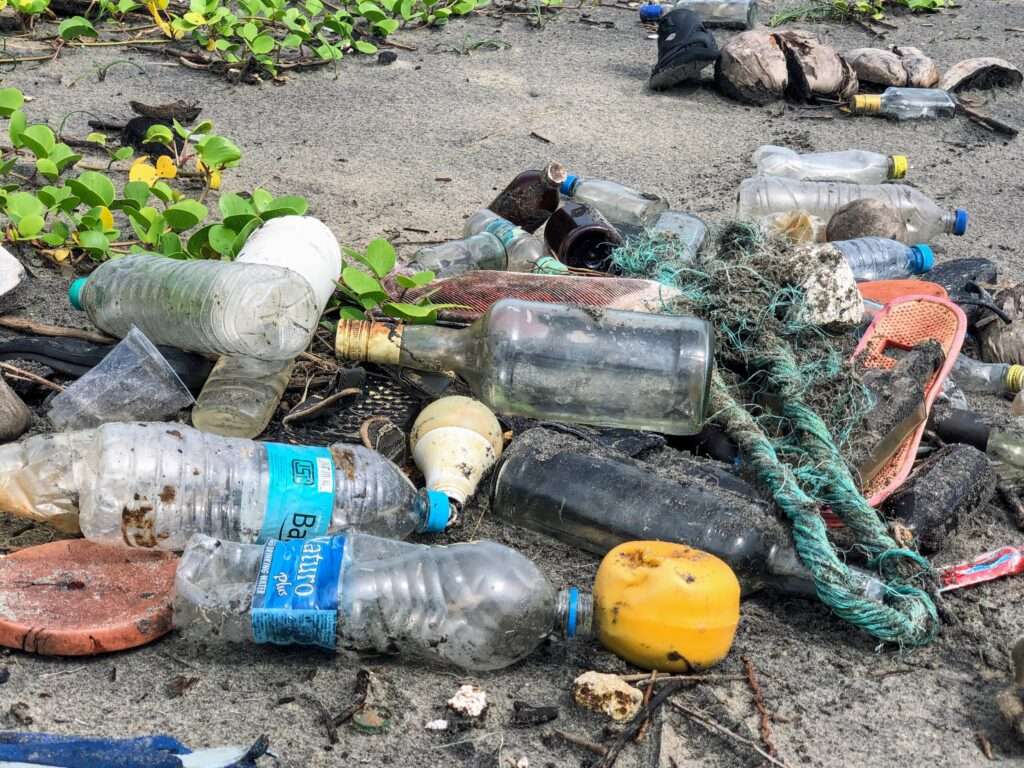As plastic production has skyrocketed over the past several decades, wealthy countries have benefited enormously — from increasingly lightweight, affordable products, for example. The full social and environmental costs of this plastic boom, however, have been disproportionately offloaded onto poorer people in the developing world.
According to an analysis published last week by the nonprofit World Wide Fund for Nature, or WWF, the costs of plastic across its life cycle — from production to disposal — are at least eight times higher for low- and middle-income countries than they are for high-income countries. In places like Brazil, Ethiopia, Fiji, and India, governments’ limited capacity to control or regulate plastic production has led to growing health risks from petrochemical plants’ toxic air emissions and chemical spills. Meanwhile, a pileup of discarded plastic threatens to overwhelm these countries’ waste management infrastructure, causing widespread land and water pollution.
“Our take, make, waste plastics system is designed in a way that unfairly impacts our planet’s most vulnerable and disadvantaged countries,” Alice Ruhweza, senior director of policy, influence, and engagement for WWF International, said in a statement.
As a third round of negotiations over a global plastics treaty begin this week in Nairobi, Kenya, WWF is hopeful that delegates will rally around policies to reduce plastic production and fund waste management in the developing world. “Business as usual could be a death sentence,” Ruhweza added.
Although environmental groups have long noted plastic’s outsize impact on developing countries, WWF’s report is one of the first to attempt to quantify that inequity. It takes into account the market price of virgin plastic, waste management costs paid directly by governments, and the costs created by the greenhouse gases emitted during the plastic production process — all of which are relatively easy to put a dollar value to.
Most of the cost disparity, however, comes from the end of the life cycle, when plastic is “mismanaged” — in other words, polluted into the environment. Mismanagement costs low- and middle-income countries at least $149 per kilogram of virgin plastic, compared to just $17 per kilogram for wealthier nations. This is because developing countries often lack the infrastructure to properly manage the mountain of trash that they generate domestically or import from elsewhere. They simply don’t have the means to prevent it from escaping into the environment and damaging ecosystems.
That $149 value represents only the most significant quantifiable impact of the plastic life cycle: the cost that poorer countries incur when plastic damages the marine environment. Diminished “ecosystem services” — the contributions that healthy ecosystems make to human well-being and the economy — could include impaired fisheries, for example, or the loss of natural water purification.
It’s more difficult to ascribe a monetary value to plastic’s other impacts — like on human health — but that doesn’t make them any less concerning. One study cited by WWF estimates that plastic pollution causes up to 1 million deaths each year in low- and middle-income countries, for a variety of reasons including the release of toxic chemicals from discarded plastic in large dump sites. Another study finds that these same countries account for 93 percent of all reported deaths that are directly linked to plastic production.
For More Visit https://grist.org/equity/plastics-life-cycle-costs-overwhelmingly-fall-on-poor-countries/



